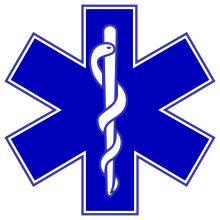- Medical waste
-
Medical waste, also known as clinical waste, normally refers to waste products that cannot be considered general waste, produced from healthcare premises, such as hospitals, clinics, doctors offices, veterinary hospitals and labs.
Contents
Europe
In Europe, wastes are defined by their European Waste Catalogue (EWC) Codes. EWC Codes are 6 digits long, with the first two digits defining the over-arching category of waste, the next two defining the sub-category, and the last two defining the precise waste stream. Clinical waste comes under the "18" codes, for example: "18 01 01" corresponds to healthcare waste (18), from humans (01), that is sharp and not infectious [01]. It has many waste things thrown.[01]
United Kingdom
In the UK, clinical waste and the way it is to be handled is closely regulated.[1]. See NetRegs Current legislation lists.
United States
In 1988 the Federal government passed The Medical Waste Tracking Act which set the standards for governmental regulation of medical waste. After the Act was repealed in 1991, States were given the responsibility to regulate and pass laws concerning the disposal of medical waste. All fifty states vary in their regulations from no regulations to very strict.
Disposal of this waste is an environmental concern, as many medical wastes are classified as infectious or biohazardous and could potentially lead to the spread of infectious disease. Examples of infectious waste include blood, potentially contaminated "sharps" such as needles and scalpels, and identifiable body parts. Sharps include used needles, lancets, and other devices capable of penetrating skin. Infectious waste is often incinerated. The most common method of sterilization is an autoclave. The autoclave uses steam and pressure to sterilize the waste. Additionally, medical facilities produce a variety of waste hazardous chemicals, including radioactive materials. While such wastes are normally not infectious, they may be classified as hazardous wastes, and require proper disposal.
In the United States, there are three main methods for medical waste generators to dispose of their waste: On-site, truck service, and mail-back disposal. On-site treatment involves the use of very expensive equipment, and is generally only used by very large hospitals and major universities who have the means to afford such equipment. Truck service involves hiring of a medical waste disposal service whose employees are trained to collect and haul away medical waste in special containers (usually cardboard boxes, or reusable plastic bins) for treatment at a facility designed to handle large amounts of medical waste. Mail-back medical waste disposal is similar, except that the waste is shipped through the U.S. postal service instead of by private hauler. Although currently available in all 50 U.S. states, mail-back medical waste disposal is limited to very strict postal regulations (collection and shipping containers must be approved by the postal service for use) and only available by a handful of companies.
See also
- Scavenger system
References
External links
Categories:- Medical ethics
- Biological waste
Wikimedia Foundation. 2010.

